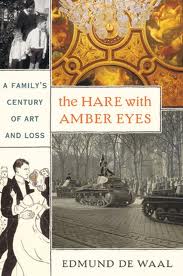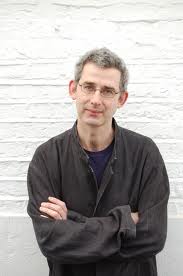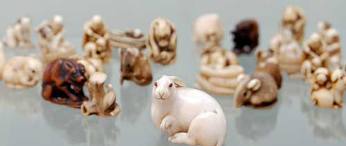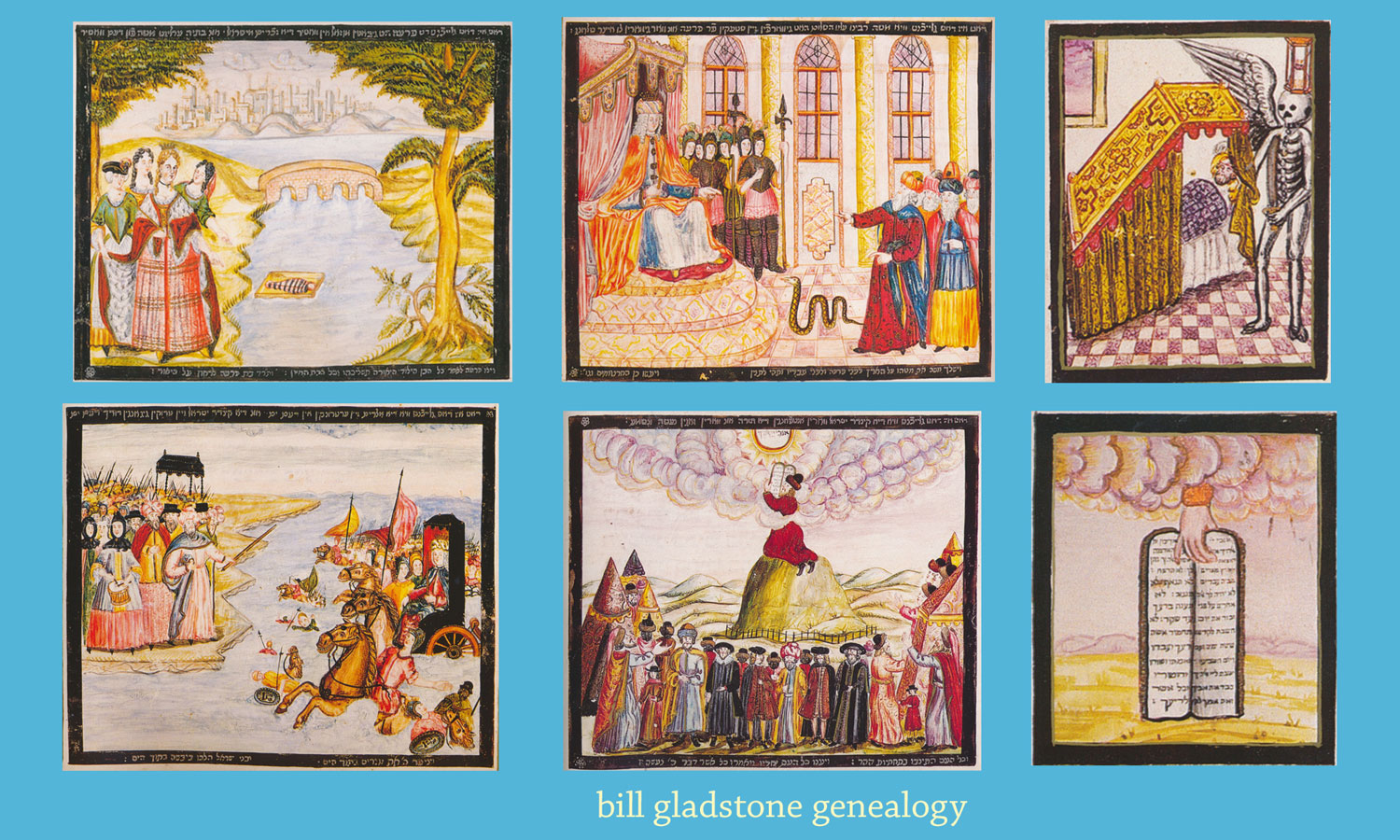 Edmund de Waal, London-based author of The Hare with Amber Eyes: A Family’s Century of Art and Loss, has described this memorable book as “a biography of a collection and the biography of my family.”
Edmund de Waal, London-based author of The Hare with Amber Eyes: A Family’s Century of Art and Loss, has described this memorable book as “a biography of a collection and the biography of my family.”
The collection he refers to is an assortment of some 264 netsuke, tiny elegant figurines carved by Japanese craftsmen in centuries past. The family is the Ephrussis, the famed Jewish grain and banking family, kin to the Rothschilds and once nearly as wealthy.
The book traces the history of the netsuke from about 1870 to 2010, inevitably illuminating the lives and times of their various owners. They range from Charles Ephrussi, the fabulously wealthy banking heir turned prominent art critic who assembled the collection, to their present guardian, de Waal himself. As much as this book is about art and provenance and the transitory nature of material possessions, it’s also a compelling family history drawn from an intriguing peripheral position. It’s a powerful tale, poignantly told.
 The hare with amber eyes and the other netsuke in Charles’s collection were kept in a large vitrine or cabinet with green velvet shelves and glass doors that locked. De Waal intricately describes the room, with its lavish furniture and Old Master and impressionist paintings, in the magnificent Hotel Ephrussi in central Paris where Charles lived.
The hare with amber eyes and the other netsuke in Charles’s collection were kept in a large vitrine or cabinet with green velvet shelves and glass doors that locked. De Waal intricately describes the room, with its lavish furniture and Old Master and impressionist paintings, in the magnificent Hotel Ephrussi in central Paris where Charles lived.
A debonaire bachelor who conducted a discreet long-term affair with a married woman, Charles hosted many artistic soirees, attended by the upper echelons of French society and many esteemed artists and writers. His friends included Manet, Renoir, Whistler and Proust, who used him as a primary model for his character Swann in Remembrance of Things Past.
After the Dreyfus affair erupted in 1894, many French citizens — including Renoir, Degas and the literary Goncourt brothers — openly declared their enmity towards the Jews. The netsuke’s Paris period ended on this discordant note. In 1899 Charles gave them to his cousin, Viktor von Ephrussi of Vienna, as a wedding present.
Almost in passing does de Waal relate the details of Charles’s remaining years and his death in 1905, after the netsuke have passed from his hands. The narrative focues on the story’s various objects, characters and incidents, it seems, only so long as they are connected to the netsuke.
Viktor and his bride Emmy, the author’s great grandparents, reside in the Palais Ephrussi, a spectacular mansion in central Vienna. He acquired the netsuke at a time when the antisemitic Dr Karl Lueger was mayor and thousands of presecuted Jewish refugees were arriving from the east.
Viktor and Emmy lived at the heart of Viennese society until the Anschluss, which introduced a unending cacaphony of brownshirts, shouts in the streets, and shattering of glass. The Ephrussis were soon swept away by the turmoil. A mob with swastika armbands banged their fists on the door, swarmed into and ransacked the apartment, a scenario repeated in many other Jewish households.
“They have walked past this house for years, glimpsed faces at windows, seen into the courtyard as the doorman holds the gate open while the fiacre trots in. They are inside now, at last. This is how the Jews live, how the Jews used our money — room after room stacked with stuff, opulence. Pushing the family members into a corner, they reach Emmy’s dressing room, the room with the netsuke, push everything off the desk, drag the desk into the corridor and over the handrail; it smashes on the courtyard below.”
Hitler arrived by motorcade along a Ringstrasse lined by cheering crowds. The male Ephrussis were taken away but Emmy was permitted to live in two rooms at the back of the house. She watched helplessly as the contents of the apartment were Aryanised, becoming the property of the Third Reich.
 “The house wasn’t theirs any more. It was full of people, some in uniforms and some in suits. People counting rooms, making lists of objects and pictures, taking things away. Anna [the maid] is in there somewhere. She has been ordered to help with this packing-up into boxes and crates, told that she should be ashamed of working for the Jews.”
“The house wasn’t theirs any more. It was full of people, some in uniforms and some in suits. People counting rooms, making lists of objects and pictures, taking things away. Anna [the maid] is in there somewhere. She has been ordered to help with this packing-up into boxes and crates, told that she should be ashamed of working for the Jews.”
The Nazis were interested in everything. Some Old Master paintings were given to museums, others sold to dealers, the very best photographed so that Hitler might have his choice of the lot. Books in the Ephrussi library were dispersed to high-ranking Nazis and to libraries in Vienna and Berlin. They also took clothes, furniture, silver; such goods were considered “ownerless Jewish property.”
Viktor and Emmy’s daughter Elisabeth, de Waal’s grandmother, escaped to England and revisited the Ephrussi mansion after the war. An American soldier invited her into what had been transformed into a series of offices. She recognized only a few incidental family possessions; the vitrine was still there but empty. The soldier sent for an old local woman who might know more.
Thus is Elisabeth reunited with Anna, the family maid — and then with the netsuke, which Anna had smuggled out of the house in her pockets by threes and fours. Eventually Elisabeth’s brother Iggy inherited them and ultimately handed them down to de Waal. Beautiful and mute, these figurines are just about all that remain of the once inestimable Ephrussi fortune. ♦
© 2011






